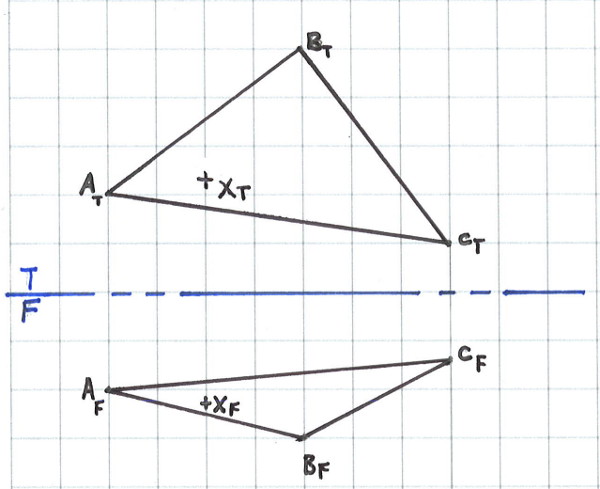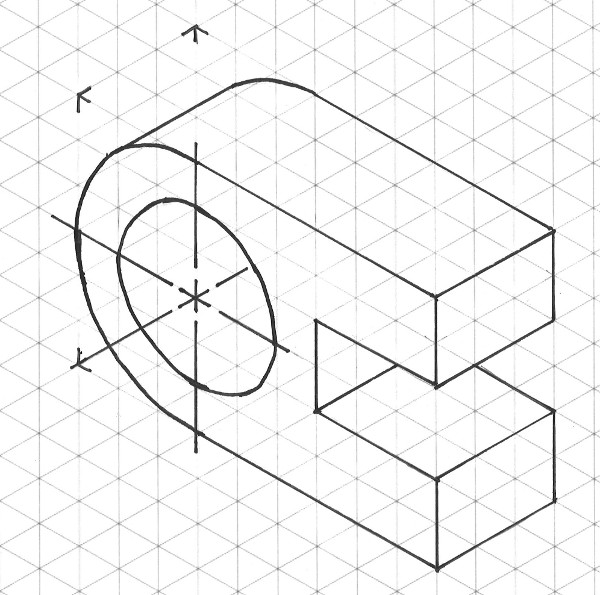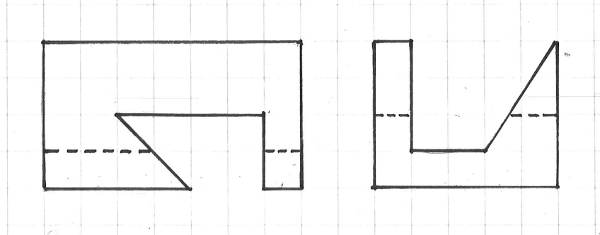Sample Final Problems ENG 4 Fall 2012
The final will be 50%-70% graphics problems and 30%-50% short answer, multiple choice, true/false, matching, and/or definitions. You should have read Chapters 1-11. The concepts emphasized in class and studio will be the primary material covered, but all of the concepts from the text may also be tested. Be sure to review the lecture material, your notes, studio material, the midterm, and all assignments. You should especially be comfortable drawing isometric drawings from multiview and vice versa, section views, auxiliary views, construction of solid models, dimensioning, traditional tolerancing, and the basics of GD & T. The following are representative graphics problems. Click the image for the solution.
I will post some more practice problems over the next few days.
Dimensioning
For the multi-view projection shown fully dimension the drawing using the standards and guidelines from Chapter 9. Make sure not to have any redundant dimensions.

Section Views
Complete the section view on the multiview drawing (the section view is shown instead of the front view).

Auxiliary Views
Using the front and top view of the plane ABC and point X use auxiliary views to determine if the point lies on the plane. Show all steps.



